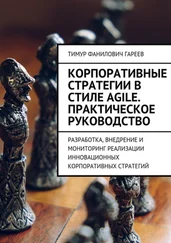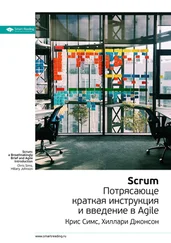People are individuals, they have careers, and they have financial pressures and personal needs. They want to advance in their careers, so the idea that everyone is equal translates into no one can advance: if you are on a team, you will always be on a team, and you will never progress in your career. Your income will never increase, because the value of your experience will not be acknowledged. When you become expert in working on certain things, the value of that will not be recognized because, according to Agile theory, anyone can work on anything.
Fortunately, real companies do not usually operate this way. Most real companies have pay grades and career levels. But the Agile community is a parallel universe. Levels and individual differences do not fit the Agile narrative, so there is no framework for discussing it in an Agile context.
Teams matter. Teams are powerful. Teams are a valid construct for developing software. Extremes are what are bad. The extreme idea that only a team matters is not realistic and is unfair. The extreme idea that no one can advance is unfair. The extreme idea that anyone can work on anything has the noble goal of empowerment and opportunity for all, but by itself it is extreme and must be balanced with the reality that there are experts too—more on that later.
Culture: Individual vs. the Collective
There is a cultural struggle in human societies pertaining to focus on the individual versus the group—the collective . It might stem from a difference of values, in terms of whether a culture generally prioritizes equality over individual liberty (freedom) or individual liberty over equality.
During the mid-1900s, Jean-Paul Sartre and Albert Camus were fast friends. Both were socialists, as were most people among the intellectual community at that time in France. However, over time the two philosophers realized that they disagreed at a fundamental level: while both valued equality and liberty, Camus found that he valued liberty more than equality, while Sartre realized that he valued equality more than liberty.
The two could not reconcile their difference of opinion, because it was deeply rooted in their respective values; and since their opinions defined them as philosophers, they had a famous falling out. 8
Most modern cultures place a high value on equality and the importance of the group, and also most place a high value on individual liberty. However, some value one over the other.
For example, North American culture tends to value individual freedom and liberty more than equality. The importance of liberty traces to the founding of the Americas by people who were searching for a land where they could practice their religion their own way. The subsequent settling of the Americas by pioneers reinforced the importance of the hardy individual and self-reliance.
In contrast, many European cultures place a higher value on the community than the individual. Perhaps that is why so many European countries have strong social safety nets, and in many European countries, it is commonplace for union representatives to sit on corporate boards.
Central and South Asian countries have cultural patterns as well pertaining to individualism and the group. In many Southeast Asian cultures, the group is valued more than the individual, and age and seniority are considered extremely important. These values are in conflict to some extent with the tradition of Agile, which advocates an “everyone is equal” and “anyone can work on anything” mindset.
Which is better? Is it better to value the individual or the group? It depends on your value system. It is also impossible to say, in a strict technical sense.
Visionaries usually call upon us to follow them on a path that is atypical and that experts advise against. That requires a great deal of trust, and that is why visionaries need a source of influence: either they have a powerful and persuasive personality or they have great resources in their name.
Is it better to let visionaries dictate our path or to block would-be visionaries and always compel their subordination to a group of experts who presumably know better?
Given the emphasis on the individual that one finds in North America, it is no surprise that North America has so many startup companies. In North America, the individual is the star: Jeff Bezos, Steve Jobs, Elon Musk, Larry Page and Sergey Brin, Henry Ford, Thomas Edison. The list goes on and on—they are visionaries who are celebrated.
But what about Elizabeth Holmes? What about Bernie Madoff? Michael Milken? Kenneth Lay?—antiheroes who could have been heroes if their efforts had panned out in a positive way.
How does one know that a person is a visionary? Can one know ahead of time? How does one know if one should trust the experts or trust the visionary?
There is no way to know. Most wannabe visionaries are often wrong, perhaps usually wrong. However, it is visionaries who change the paradigm. Given enough time, the paradigm would probably shift, but visionaries make it shift now. It was visionaries who gave us the iPhone and its copycats, electric cars, and relativity (which was stridently mocked and refuted by many scientists of the time).
So, do you follow a visionary or follow the group consensus? There is no way to know, and it also depends on your value system.
People Don't All Work the Same
Individuality also pertains to how people work . Not everyone works the same. Just because someone works differently than others on a team does not make that person a misfit. Agile is rife with all-team practices: everyone joins the standup; everyone is equal in the retrospective; everyone takes a story and works on it, collaborating with others. But some people do not adjust well to those ways of working—ways that are highly interactive, in which you are on the spot all the time, on your feet or expressing your idea verbally. Some people work better in isolation, with quiet, and express themselves better in writing.
Such people are not outliers; they are the introverts, as we discussed in Chapter 1. If we shun those people or make them feel like they are misfits, we lose the enormous value of what they can contribute. Those people are often the deep thinkers—the ones with the powerful insights. It was during quiet reflection before a fireplace that Dirac suddenly realized the solution that became the Dirac equation—the key to relativistic quantum mechanics. 9 It was a moment alone, making his morning coffee, in which Héctor A. Chaparro-Romo suddenly saw the solution to the 2,000-year-old problem of spherical aberration. 10 It was a walk along the Royal Canal in Dublin when Sir William Rowan Hamilton suddenly saw the solution to the quaternion problem, 11 which underlies much of particle physics today.
Yes, these people collaborated with others, which led to new trains of thought, which is essential; but it was during silent reflection that they were able to create the deep and complex mental model needed to pursue those new trains of thought and suddenly have the insight needed to solve a complex problem.
It is a shame—a poverty—to ostracize such people and make them feel like misfits on teams.
Communication Is a Process, Not an Event
We have mentioned that before the Agile Manifesto was created, Alistair Cockburn had been writing about how, in his opinion, face-to-face communication is the most effective form of communication. It is not always, though.
Communication about complex topics is a process, not an event. If you gather five people into a room for an hour to talk about something complicated, which none of them have had a chance to discuss together before, then what usually happens is that in the course of the hour the conversation will jump all over the place. Some will be unable to fully explain their thoughts. They can't because for a complex topic, it might take longer than people are willing to listen without jumping in.
Читать дальше











